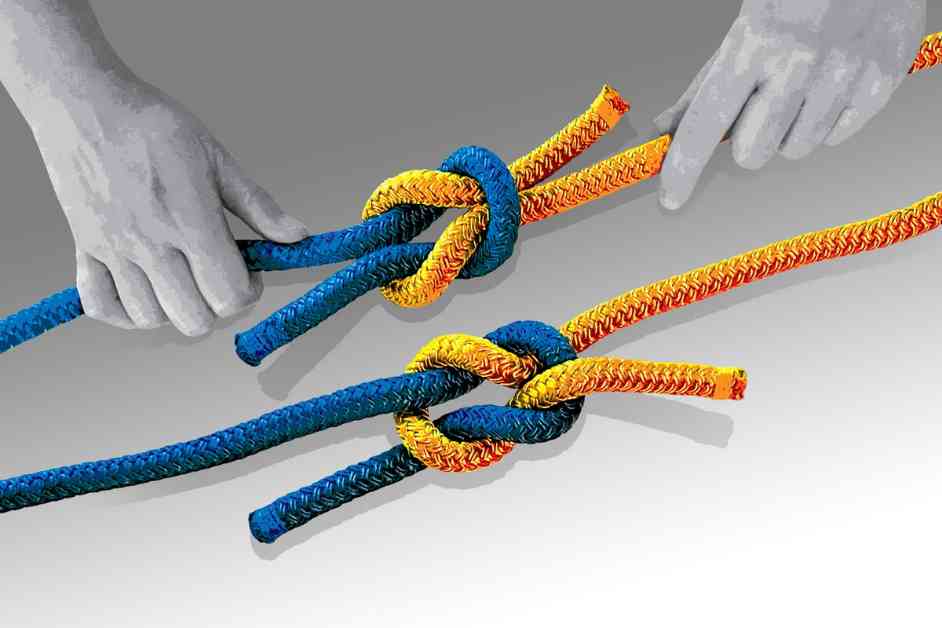People often pride themselves on their ability to make quick judgments about the physical world around them. Whether it’s predicting the outcome of a pool shot or assessing the stability of a precarious stack of dishes, our intuitive physics skills are constantly at work. However, a recent study has shed light on a surprising blind spot in our physical reasoning abilities – the evaluation of knot strength.
In a world where knots are encountered in various scenarios ranging from everyday tasks like tying shoelaces to more critical situations like rock climbing or sailing, understanding the strength of a knot can be a matter of safety. Yet, according to researchers Chaz Firestone and Sholei Croom from Johns Hopkins University, people are surprisingly bad at judging the strength of knots.
The study presented participants with four distinct knots – the “thief” (A), “reef” (B), “granny” (C), and “grief” (D) knots – and asked them to rank the knots from weakest to strongest based on visual inspection. While the thief and reef knots may appear similar visually, the positioning of the bitter ends in each knot plays a significant role in their strength. The grief knot, in particular, was identified as the weakest among the four, despite its seemingly sturdy appearance.
Croom explains, “A knot with two bitter ends on opposite sides is a lot weaker than if the two sides are the same. The grief knot, aptly named, is so weak you could sneeze on it and it would fall apart.” This discrepancy in perceived strength highlights the complexity of evaluating knots based on visual cues alone.
The findings of this study not only offer insights into human perception and physical reasoning but also have practical implications for safety in various fields. Understanding why people struggle to accurately assess knot strength can help scientists predict when snap judgments about physical situations are likely to be flawed, potentially preventing unsafe outcomes.
Unraveling the Knot: The Science Behind Human Perception
Knots serve as an intriguing case study for scientists studying human physical intuition. The study of knots not only reveals the limitations of our intuitive physics skills but also raises questions about the underlying mechanisms that influence our perception of physical objects.
Croom suggests that factors such as elasticity and the distinction between soft-body and rigid-body objects could play a role in our ability to accurately assess knot strength. By delving into the intricacies of knot physics, researchers hope to gain a deeper understanding of how our brains process spatial information and make judgments about the physical world.
As we navigate a world filled with tangled cords, knotted ropes, and intertwined threads, the ability to accurately evaluate the strength of a knot becomes increasingly important. Whether it’s securing a tent while camping or tying a fishing line, the difference between a strong knot and a weak one can have significant consequences.
In conclusion, the study on knot strength serves as a reminder of the intricacies of human perception and the importance of questioning our assumptions about the physical world. By unraveling the complexities of knot physics, researchers aim to not only enhance our understanding of intuitive physics but also improve safety in various practical applications where knot strength is a critical factor.










